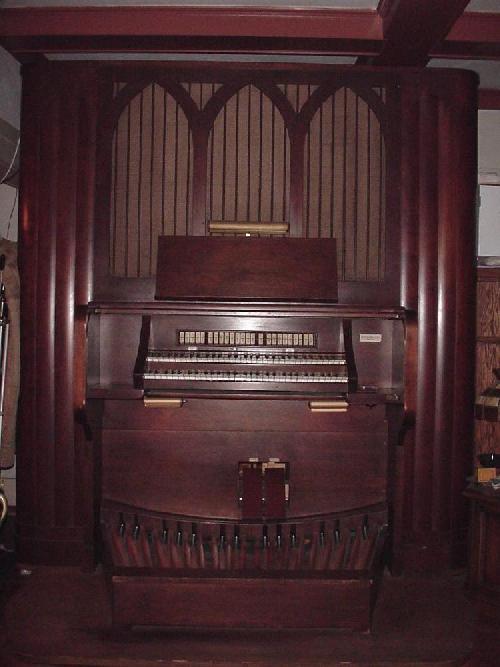
I recommend reading this treatise through before you start, and of course you can refer to it at any time. Bear in mind also that in the factory, there were folks specializing in various parts of the instrument, but you have to know about all of it. After all, the reed organ you have was built in a factory by dozens or hundreds of workers, probably no one of which ever paid any real attention to the completed instrument. Working on a reed organ need not be a lonely job: a few compatible souls can get the job done faster, at least, and the companionship and pride in a job well done can then be shared. Note: If you are in Florida, it may be 59, or 64. The person or persons contemplating repairing or rebuilding their reed organ should have the following attributes: If you found a Stradivarius violin in your attic, no way would you put it into a museum to be drooled over by every violinist who passed by: it would be repaired, rebuilt, and used! In my book, the same goes for reed organs.

They should be preserved, they should be played, and they should be enjoyed.

There are some museum curators who take the position that all reed organs, being more-or-less "old", should molder away in musty museums somewhere, to be played rarely (and only with permission!), and to be examined by scholars only if such are found worthy.
#Kimball organ back series
An illustrated version is in the works, and available soon! The Aunt Maude Series updated and illustrated on CD. The original text, as far as it went, was on the ROS website for some years, and this revised text replaces it. There follows a treatise, often referred to as the "Aunt Maude" series, revised in December, 2000. Should restoring be a daunting task or you just don't have the time, Contact the ROS councilor in your area to help find members who are qualified restoration experts. WARNING - once you complete your first restoration it will probably not be your last. Jim Tyler wrote the following article that will help you through your restoration - be sure to read it first and then reference back to it throughout your first restoration.

Dedicated to the company's Guiding Principles, its values and integrity are evidenced by public recognition as a highly trusted company and an employer of choice.Are you considering to do the reed organ restoration yourself? It can be done, but be sure to know the "do's and don'ts" of restoring. Kimball International now creates design driven, innovative furnishings sold through the family of brands: Kimball Office, National Office Furniture, and Kimball Hospitality. The diverse portfolio offers solutions for the workplace, learning, healing, and hospitality environments.

Kimball International transformed again into a focused furniture company and continued as a publicly-traded company on the NASDAQ Exchange under the ticker symbol KBAL. On November 1, 2014, Kimball International spun-off its Kimball Electronics business segment to an independent publicly-traded company. These brands are serving the funishing needs of the commercial office, learning, healing and hospitality markets. Since 2014, Kimball International has focused on profitable growth of its three brands, Kimball, National and Kimball Hospitality.


 0 kommentar(er)
0 kommentar(er)
